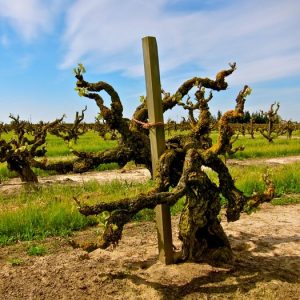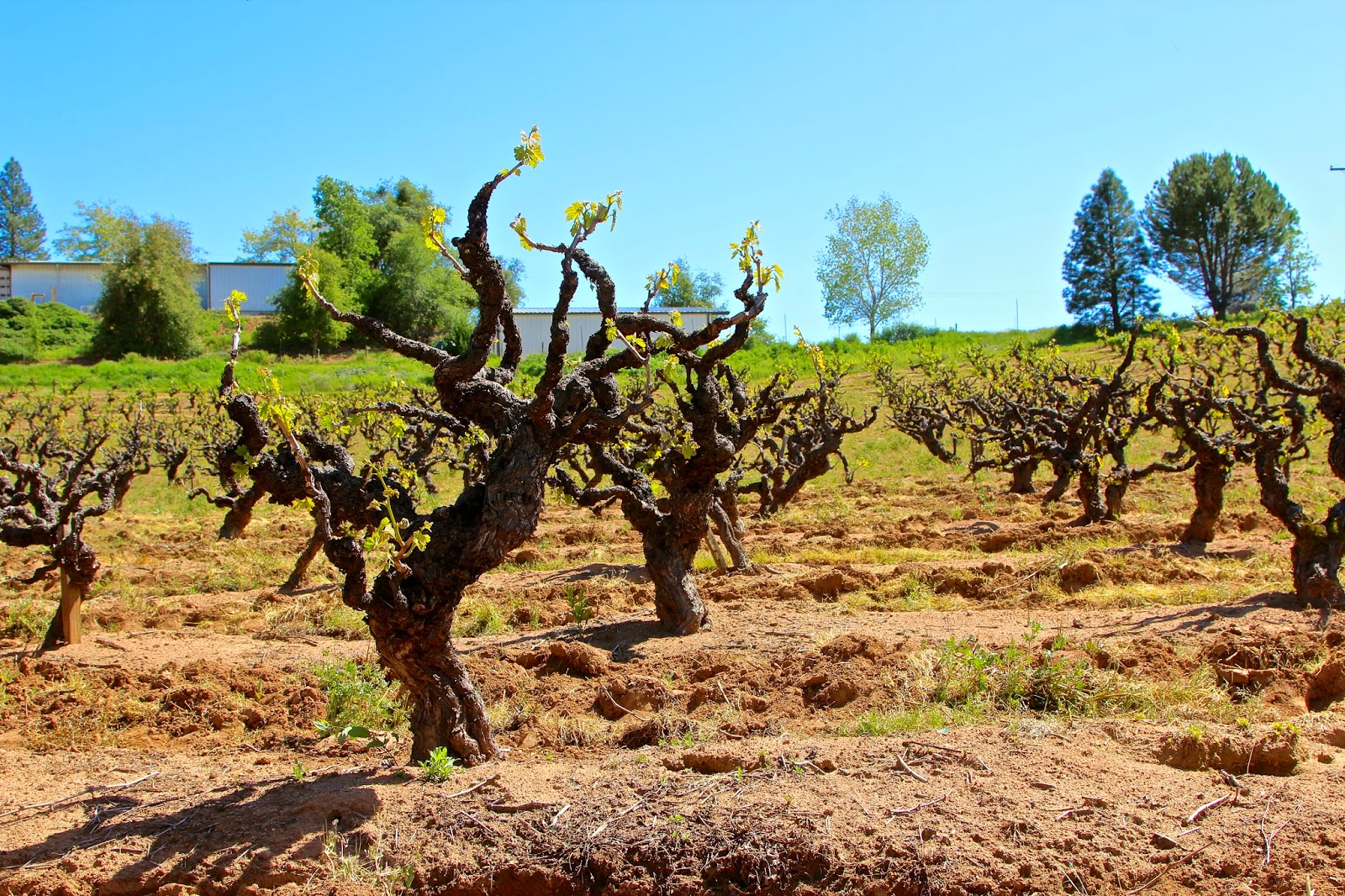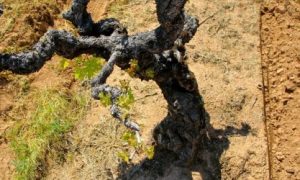About the Region

The California Shenandoah Valley AVA is an American Viticultural Area that includes portions of Amador County and El Dorado County, California, United States. The region was first settled during the California Gold Rush in the nineteenth century, and settlers in the region began planting the first grapevines and producing the first wine soon thereafter. In the 1970s, Sutter Home Winery began bottling varietal Zinfandel wines made from Shenandoah Valley grapes, and in 1983 the region became a designated AVA. The most important grape variety in the region is Zinfandel. The DeMille/Norton produced small bunches with high extraction. The vineyard was planted in the days when horses were still used for cultivation. These vineyards are non-irrigated, stand-alone, head pruned vines that express the Amador Zinfandel terroir.
Original Grandpère Vineyard, Amador County
The Early Years
Growing up in California’s Sierra Mountains Region, Scott developed a keen interest in winemaking as a high school exchange student in the Rhineland Pfalz region of Germany. Scott attended California State University at Sacramento before beginning practical Enology training at Montevina Winery in Amador County. Back to Germany in 1975, he apprenticed at K. Fitz-Ritter Winery while attending the Weinbau Schule in Neustadt. Once again returning to Montevina Winery, Scott focused on all aspects of winemaking and running a winery. From farming the grapes to effectively marketing the wine, Scott solidified his knowledge and experience. In 1978, at the age of twenty-three, Scott took over as Head Winemaker for Story Winery, also in Amador County.
In 1979 Scott developed an ambitious winery plan for the Santino family. As Winemaker and General Manager of Santino Winery, Scott is credited with placing Amador County firmly on the California wine map. Crafting the best wines possible from the soils and climatic conditions of the region, Santino and later Renwood benefited from Scott’s German training and innovative style. Becoming one of the leading wineries in Amador County, and garnering critical acclaim, the wine world was paying attention. Amador County was now recognized as a world-class wine-growing appellation.
SCOTT GOES BIG
In 1996, Scott was recruited as Partner, Winemaker & President for newly purchased, Folie a Deux Winery in Sonoma. Combining forces with Lead Partner, renowned Winemaker, Richard Peterson, Ph.D, a formidable winemaking team was launched. Scott pursued his commitment to award-winning Cabernets made from the Estate Vineyards in Napa Valley while continuing his passion for Amador County Zinfandel. Access to Scott’s original Grandpère vineyard in Amador County and close relationships with premier Amador County growers, resulted in award-winning wines all around for Folie a Deux. In addition, Scott’s creation, the “Menage a Trois” line of wines, was an instant commercial success. In 2004, Folie a Deux, now a respected brand, was sold to Sutter Home/Trinchero Winery.
Original Grandpere Vineyard
In the summer of 1869, U.S. government surveyor James M. Ingalls scrabbled about the oaks, pines, and chaparral of northern Amador County, the enclave known today as Shenandoah Valley.
He noted in his journal such landmarks as gold diggings, brush fences and brooks, a house here and there, and a vineyard.
He didn’t mention whether early settler John Upton’s house near Pigeon Creek included a vineyard, which seems odd, though surveyors didn’t record everything they saw. Besides, during the next spring, a map quite possibly based on Ingalls’ notes was drawn to show a house with a vineyard more or less at the site of Upton’s residence. (The vineyard that Ingalls did note is far to the southwest of the Upton homesite.)
Today, Terri Harvey owns the old Upton property, continuing to farm dark, stumpy and gnarled vines that climb the slope behind her house. The plot is now named Original Grandpère Vineyard, and it was designated the California State Fair’s Vineyard of the Year for 2016.
For years, the property has been referred to as “California’s oldest documented Zinfandel vineyard,” but that claim is challenged by wine historians who haven’t found evidence to confirm that Zinfandel was on that property as early as 1869, though vineyards in the region had been planted to Zinfandel since the 1850s.
Also at issue is how many of the vines go back nearly a century and a half, given that replacing older vines with newer ones isn’t uncommon. Terri Harvey, however, calculates that maybe 85 percent of the vines date from 1869.
Whether the wobbly vines of the Original Grandpère Vineyard are 147 years old or older could be answered if scientists had a reliable way to determine a vine’s age, as they do with trees, but they don’t.
Even if the Original Grandpère Vineyard were shown to date only to the 1880s, when Zinfandel plantings flourished in the foothills, or to the early 1900s, when another surge in cultivation developed in the region, it still would qualify as one of the state’s older Zinfandel vineyards.

Besides, to winemakers who buy grapes from the vineyard each fall, the specific age of the vines is virtually irrelevant. They recognize that the vines are really old, talk of the plot in reverent tones and say the age of the vines is reflected in zinfandel characteristics not found in younger vines.
“It’s the only vineyard where I get goosebumps when I walk into it,” says winemaker Mark McKenna of Andis Wines, one of four wineries currently releasing a zinfandel made with grapes from Original Grandpère. “All the work that was done before us is epitomized by Original Grandpère.”
Each of the four winemakers who works with fruit from the vineyard brings his own stylistic interpretation to the final wine.
Yet the four also find traits in wines made with grapes from Original Grandpère that they don’t see in zinfandels made from fruit grown elsewhere in the valley. After the juice has been fermenting for a few days, for one, winemaker Rusty Folena of Vino Noceto detects a smell not unlike roasting coffee beans when he walks into the cellar. It disappears when the wine is bottled but emerges with an aroma akin to black coffee after a few years of aging, Folena has found.

He and other winemakers who work with grapes from the vineyard say the wines share several traits common to Amador County zinfandel – suggestions of fresh raspberries, black pepper, and cloves – but in a delivery that balances power with more layering and finesse than usually found in the region’s zinfandels. The wines tend to be generous in expression if lean in build. They aren’t the sort of ripe brawler often associated with Amador County. A thread of minerality or dust in the wines isn’t unheard of.
“There can be monster Zinfandels from the foothills, but wines from that vineyard show a more elegant side of Zinfandel,” says Tim Holdener, winemaker at Macchia Wines in Lodi, another winery to buy grapes regularly from Original Grandpère.
Being out here is like sitting down with someone 100 years old. This vineyard tells its own stories.
The wines also reflect the nature of the vintage to an unusual degree. Folena suspects that that’s because the vines are head pruned, meaning their canes grow wild, meandering in all sorts of unpredictable directions, rather than being strung along trellis wires to grow in a fixed direction. “The canes grow in a different direction each year, so the fruit changes year to year. It’s like growing grapes on a turntable,” Folena says.
Winemaker Scott Harvey, Terri Harvey’s former husband, buys grapes from Original Grandpère for the Vineyard 1869 Zinfandel he makes under his eponymous label. As the name suggests, Harvey is confident the vines date from 1869, and he attributes their age and the traditional dry farming of the plot for the complexity of wines of the site. “With vines being so old and dry-land farmed, the roots have gone down as far as 25 feet. … Each layer of soil gives the wine another dimension,” says Scott Harvey.
He also notes that Original Grandpère is one of few vineyards in the valley with a generally northern exposure, which helps stretch the customary growing season until around Columbus Day. “The grapes hang longer into the harvest, giving them time to fully ripen without overly high sugars,” he says.
The four winemakers harvest their allotment of grapes on the same day each fall. “The phone rings and Terri says, ‘We’re picking Thursday.’ So we all pick on Thursday,” McKenna says. Each winemaker picks from his preferred area of the vineyard, which yields only about a ton and half an acre. Thus, as with any given vintage, Original Grandpère will give up about 1,000 cases of wine.
The Harveys began to lease the 10-acre vineyard in 1982. At that time it was commonly known as Downing Vineyard, after owner John Downing. The Harveys bought the property in 1988, subsequently rechristening it “Grandpère,” French for “grandfather.” “It was the granddaddy of Zinfandel vineyards,” says Scott Harvey. “It sounded pretentious, but everybody loved it.”
About two decades ago, while Scott Harvey was a principal in both the vineyard and in Renwood Winery across Steiner Road, cuttings from Original Grandpère were used to establish a vineyard at Renwood, which trademarked the name “Grandpère.” Renwood continues to make a Grandpère Zinfandel, though none of the grapes that go into the wine are from the Original Grandpère Vineyard, the name that Terri Harvey uses and the designation that winemakers who buy her grapes generally use on their labels.

The Harveys divorced in 1996, with Terri Harvey becoming sole owner of Original Grandpère the next year. In addition to farming Original Grandpère, she manages six other vineyards. “You aren’t going to make a living with what you get off here,” she says while walking about the vines of Original Grandpère.
“Being out here is like sitting down with someone 100 years old. This vineyard tells its own stories. It’s such an incredible feeling to have the privilege to be out here and to care for it to the best of your ability,” Terri Harvey says.
She’s the only one she trusts to drive a tractor through the vines for fear of knocking over any of them. “I have to come out here in the right frame of mind. I have to be careful and to take it slow. When I spray and disc, I don’t want to be wigged out about a lot of other stuff,” she adds. “If I don’t get it done in one day, there’s the next day. Until the day I can’t, I’ll always do the tractor work in this vineyard.”
To sum up, Scott continues to produce high-end wines, with Zinfandel as his stars and now we can attest they hold up over time. If you have not tried any of the Zinfandels, these are “must have” for your cellar. The Club pricing is very good and you can mix your lots. Jana is always available to help with choices, provide technical notes, and dig through the Library for your specific choices.
In addition to the Zinfandel, the Barberas are as good as any you will find in Italy at a much more desirable price.
Contact info:
info@scottharveywines.com
jana@scottharveywines.com

